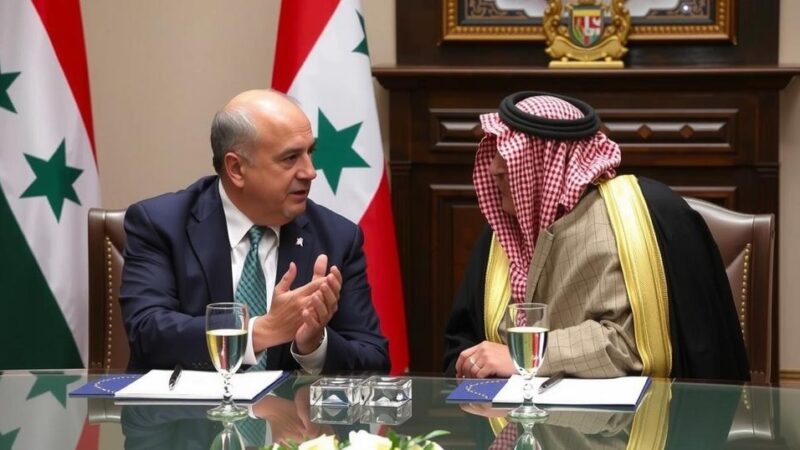The article explores the stark contrasts and superficial similarities between the conflicts in Palestine and Kashmir, emphasizing their colonial legacies and differing international support dynamics. It highlights how historical events and current geopolitical alignments influence the struggles for rights in each region, advocating for greater international intervention to foster peace.
The comparison between Palestine and Kashmir has frequently surfaced, notably last week at the United Nations by Pakistan’s Prime Minister. Although there are some similarities between the two situations, these tend to be superficial. Israel was established in 1948, coinciding with India’s conflict with Pakistan over Kashmir. Both situations are products of colonial legacy, resulting in significant suffering for the populations seeking rights as per United Nations resolutions. The military confrontations between India and Pakistan have largely resulted in stalemates, with the Kashmir dispute frozen post-1972, a stark contrast to the ongoing plight of the Palestinians. The situation in Kashmir escalated when an armed uprising emerged in 1989, following global geopolitical shifts after the Cold War. Both Palestinians and Kashmiris have resorted to tactics like plane hijacking to demand their rights; however, differences in international support highlight their distinct trajectories. The Palestine issue garnered substantial support from the USSR, while Kashmir has seen backing from Western powers, particularly with Pakistan’s alliance with the West. The history of Palestine is unique, shaped by tumultuous events that have devastated the region as a result of U.S.-led military interventions targeting former Soviet allies. Libya, Syria, and Iraq, among others, endured such hostilities, while Iran’s turmoil began with the fall of the Shah. India, conversely, has not faced similar challenges, having supported Western policies in the region, steadfastly aligning with Israel. Amid escalating tensions in Kashmir during the 1990s, prominent figures warned that the conflict might spark a nuclear calamity, a notion primarily propagated by leaders of the Hurriyat Conference. In contrast, the current international dynamics have shifted; with China opting for a partnership with India rather than internationalizing its disputes, Pakistan seems to persist in bringing Kashmir to the global discourse. Pakistan’s recent appeals at the UN may overlook India’s ambiguous internationalization tactics, which include foreign diplomatic tours of electoral processes in Kashmir—an event not replicated in other Indian states. In stark contrast, Israel benefits from advanced surveillance capabilities, with numerous Western satellites monitoring its security interests, particularly in the Mediterranean region—an area that has not seen as much scrutiny concerning Hamas, according to recent intelligence failures. The Israeli military establishment, faced with criticism for its intelligence oversights, continues employing drastic measures in conflict, with recent military operations in Lebanon and targeted strikes against senior Hamas and Hezbollah figures, illustrating a sustained campaign against perceived threats in the region. Despite the ongoing military tensions, the situation in Lebanon suggests the conflict may be far from settled, as Hezbollah retains significant combat readiness and strategic resources. Thus, the complexities of these geopolitical dynamics reflect how historical legacies and contemporary alliances shape the struggles of both Kashmiris and Palestinians. The recent developments reveal that effective international intervention is crucial to de-escalating the tensions and safeguarding regional peace.
The article examines the longstanding conflict situations in Palestine and Kashmir, particularly drawing parallels and highlighting the differences stemming from colonial histories and international support. It discusses the creation of Israel in 1948 and the emergence of conflict in Kashmir as products of colonial legacies, emphasizing the varied geopolitical developments that have influenced both regions over the decades. Additionally, it contrasts the current international roles of countries involved, with a particular focus on how the West engages with these conflicts compared to the geopolitical aftermath of the Cold War, as well as the implications of military strategies and surveillance.
In summary, the article elucidates the deep-seated complexities and historical underpinnings of the conflicts in Palestine and Kashmir. Despite superficial similarities, the two struggles are influenced by distinct geopolitical factors and historical contexts. The ongoing military situations, particularly in Lebanon and the broader Middle Eastern and South Asian regions, necessitate a conscientious approach to international diplomacy, aiming for stability and resolution in these enduring conflicts.
Original Source: www.dawn.com







